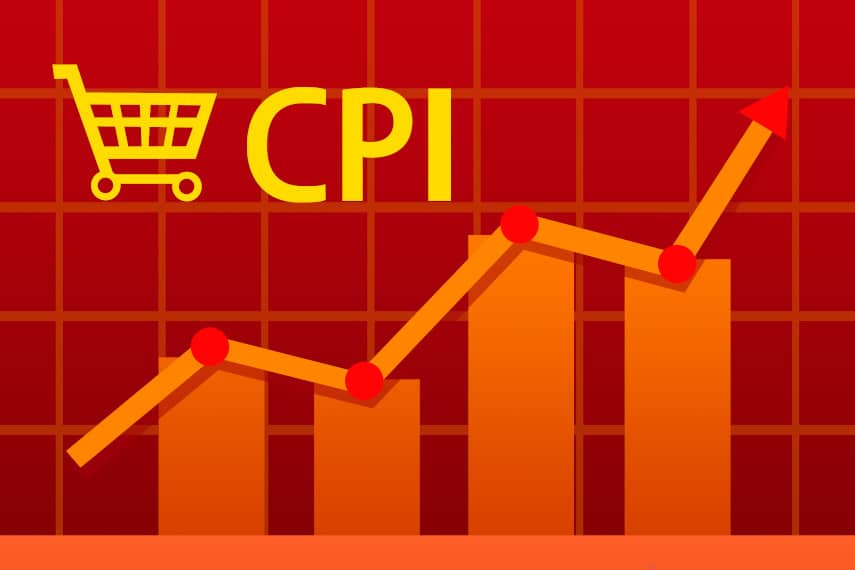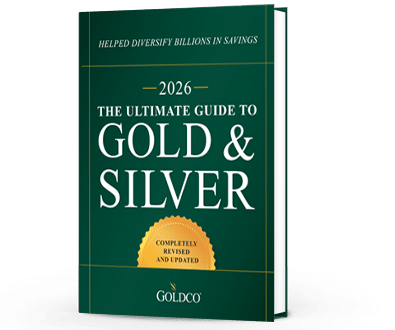6 Indicators of a Potential Recession
It seems that in the media today there are more and more mentions of the dreaded R-word: recession With growing economic uncertainty, the threat of potential recession seems to be growing as...
Economy

Everyone knows by now that inflation is rising, and the latest data from the Producer Price Index (PPI) make it clear that the growth of inflation could continue to accelerate in the future. The Fed’s insistence that inflation is merely transitory is a farce, yet the Fed continues to double down on that view.
In fact, not only the Fed, but also Wall Street is betting heavily that inflation is just a flash in the pan. Financial markets seem to be complacent, failing to price in any risk from inflation. Yields on 10-year Treasury bonds are around 1.3%, while yields on the 30-year Treasury are around 1.9%. All the while, inflation is running at 3.5-5.5%, depending on which measure of inflation you prefer.
Who would willingly loan money to the government at such low rates, with such high inflation? You would be taking a guaranteed loss due to high inflation, yet markets continue to buy debt at those low rates. Nonetheless, despite what markets think, inflation is here to stay.
Eventually markets will be forced to catch up and price government bonds according to their actual worth, as inflation continues to rise. And there are three major factors right now driving inflation.
As Milton Friedman once said, inflation is always and everywhere a monetary phenomenon. In fact, the definition of inflation used to be an increase in the money supply, the effect of which, all other things being equal, was a rise in the price level. Only in recent decades have cause and effect been confused with each other, such that inflation now refers to an increase in the price level.
At its root, however, inflation remains a monetary phenomenon. So when the Federal Reserve adds $4 trillion to its balance sheet, as it has done since last year, it shouldn’t be any surprise that prices have started to rise as a result of that.
The Fed has promised to continue its loose monetary policy, creating nearly $1.5 trillion a year in new money. Despite Wall Street’s fears of a “taper” of easing, the Fed has thus far shown its reluctance to admit that inflation is a problem.
While headline inflation numbers are nearing 6%, the Fed believes that inflation is really at 3%, since it uses a different index for its calculations. Therefore it could be quite a while before the Fed finally decides that inflation might be problematic.
As long as the Fed keeps increasing the money supply, there will be no end to inflation. And even a taper means the Fed will keep inflating, just at a slower rate.
One of the reasons the Fed is doing this is because the federal government spent trillions of dollars on stimulus payments to counteract the effects of COVID lockdowns. As a result, trillions of dollars of new debt would have hit world debt markets, a sum that markets likely would not have been able to absorb all at once.
In a way, the Fed was forced to mop up that debt issuance. But because it did so, the government thinks that the Fed will always step in to cover any emergency spending and new debt issuance.
Now that we’ve seen a $1.2 trillion infrastructure deal pass the Senate, Congress is set to pass a $3.5 trillion spending bill. And what will come next? Does anyone really expect Congress to stick even to the massively unbalanced budget the White House has proposed?
When Congress passed the $700 billion TARP bank bailout in 2008, it was such a massive package that hardly anyone could believe it. But it quickly set the tone for the future of both fiscal and monetary policy.
Now that the Fed has increased its balance sheet by $4 trillion, and the federal government just ran a $3 trillion annual deficit, the prospect of deficits that are routinely $1-2 trillion per year no longer sounds daunting. Need more stimulus? Just spend another trillion or two. The Fed will take care of it.
The prospect for vastly increased federal government spending, and Federal Reserve monetary accommodation to soak up that newly created debt, is rising. And if that happens, it could accelerate the growth of inflation.
An important driver behind inflation today is rising inflation expectations. If consumers fear that inflation is rising too high, and they’re afraid that it will continue to rise out of control, it can influence their spending patterns. Since the velocity of money can also play a role in rising prices, the higher inflation expectations rise, the greater the possibility of panic buying that can result in prices rising further.
In essence this is kind of like a self-fulfilling prophecy. The expectation of higher prices leads people to start increasing their consumption. That can lead to shortages, leading others to panic, and prices to rise. Seeing prices rise reinforces the panic, and the whole economy begins to see prices spiraling ever upward.
The Fed is supposed to take inflation expectations into account, but for over a decade inflation expectations have been very low. Now that they’re beginning to rise, no one knows just how high they’ll rise. But the prospect for a self-fulfilling panic is certainly growing.
When it comes to protecting assets against inflation, gold has historically been one of the most trusted hedges there is. The yellow metal often performs well during times of high inflation and economic turmoil.
During the 1970s, for instance, gold’s averaged annualized growth for the decade was over 30%, far higher than the 11% at which inflation peaked. And in the aftermath of the 2008 financial crisis, gold nearly tripled in price.
Many investors are banking on similar performance in the coming years. With inflation rising, government spending showing no signs of abating, and more and more headwinds dragging on economic growth, the 2020s could end up looking a lot like the 1970s.
If you want to protect your assets against inflation, it might be worth taking a look at gold. Give the precious metals experts at Goldco a call with any questions you have, and get yourself on the road towards protecting your retirement savings with gold.

